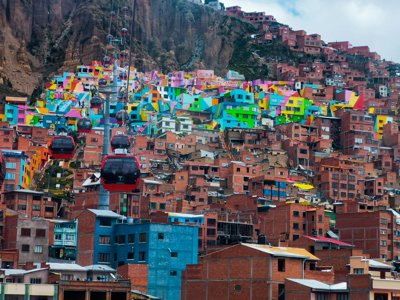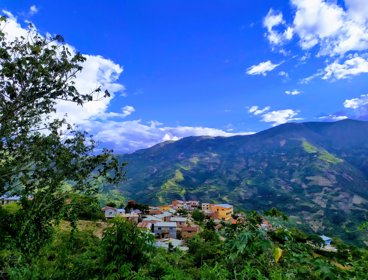Her research explores how urban dwellers respond to environmental risk in cities of the global south, with particular interest in urban communities in Cochabamba, Bolivia, where she conducted her fieldwork. We spoke to Gemma about disasters and urban risk in Bolivia.
What kind of disasters are cities in Bolivia at risk from?
Urban Bolivia is most known in disaster research for its landslides, especially in the capital La Paz. These are large scale disasters that typically affect many families and where people are killed, seriously injured and/or their houses are totally destroyed. In the aftermath, these disasters typically attract external support from city authorities or aid organisations. However, my research explores small scale disasters that may only affect one or two houses and which may only result in property damage. There is very little research on small scale disasters; however, their cumulative socio-economic impact can be much higher than large scale disasters. In addition, people who are affected by small disasters very rarely receive post- disaster support and so greater knowledge of such events is necessary.
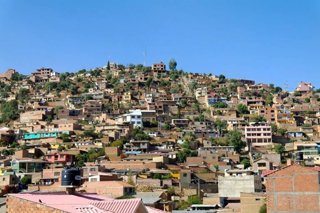
Cochabamba, Bolivia. Source: Gemma Sou
Why does urbanisation increase disaster risk?
First, urbanisation -given rising urban populations and the population density of these settlements directly increases the number of people who are exposed to a hazard - means more people are injured, more houses and infrastructure are destroyed, more people may lose their livelihoods for example. In this sense, more people are at risk to a disaster. Second, people’s activity can indirectly and cumulatively create more hazards through their effects on the environment. For example, in my research I find that densification of the communities increases ground instability which may lead to more frequent landslides. Further, houses are constructed very close to one another and so rainfall often runs from the roofs of one house onto neighbouring houses which can also damage the structure of houses. This element of disaster risk illustrates the increasing interdependence of people’s disaster risk, and is also creating significant antagonism between neighbours. Thinking more long-term, cities are the primary producers of greenhouse gases which cause climate change. Therefore, more people living in cities means that more greenhouse gases are produced and so extreme weather events associated with climate change - such as a greater incidence of more intense rainstorms - are increasingly likely.
What were the impacts of some disasters in Bolivia in the communities you visited?
Most of the disasters result in property damage. This varies from cracks in walls to total collapse of the structure. In some cases people are personally injured from falling roofs or walls. This physical damage has further social and economic impacts on the families as they lose significant investment that they make in their house over many years. In addition, many people use their homes as places for earning income by building small shops or workshops where they produce goods to sell in local markets. As such, when their house is destroyed, they not only lose a place to sleep, but their means of income too. There are also gender differences as women are more likely to suffer physical injury as social norms dictate that women are more likely to stay at home and take care of domestic duties. Other impacts include children missing school as they often help in the immediate aftermath of a disaster. People also show greater signs of fear and anxiety following a disaster, particularly during rainfall. This is more severe for children and people who suffer physical injury; however, anxiety levels typically reduce over time.
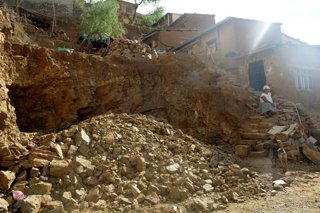
What kinds of mitigation strategies were in place to try and reduce risk?
People receive very little organisational support with disaster mitigation. Local churches, friends and family may provide help in the aftermath; however, there is little assisitance in the pre-disaster stages. Likewise the local government only intervenes (inadequently) following large disasters and not in the period before a large disaster. Following a landslide in 2008 which affected 70 families the local government provided mattresses and rice to families. The local government then declared the affected area too hazardous and suggested that people migrate to a rural town, offering each family US$5000 as an incentive. In consequence, the local government promotes the idea that local disasters cannot be mitigated and that the only solution is too leave the area. This absolves the local government from any responsibility, and places responsibility for mitigation on the urban dwellers themselves. Problematically, disasters have for a long time be seen as a rural problem and the responsibility of specialised disaster organisation. As a result the city authority in Cochabamba (and many other cities in the global south) do not give sufficient attention to how they may mitigate urban disasters and commonly focus on the more traditional urban development issues such as the provision of basic services. This is one of the big challenges of disaster mitigation as city authorities must increase the focus on mitigation and try to integrate risk reduction into other development projects.
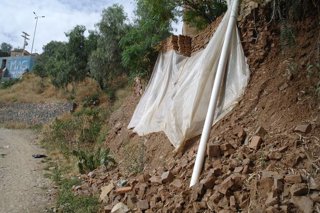
Cochabamba, Bolivia. Source: Gemma Sou
Are there any other ways people tried to reduce their risk?
Individual urban dwellers carry out many strategies to mitigate their risk. Some people move house, either to another community or to another plot within the community that they perceive as less hazardous. During heavy rainfall people often move to the part of the house that they believe is most secure. They may sweep rainwater away from their house and into surface drains. Many people place plastic sheets around the base of their house in order to stop rainwater destabilising the ground. However, most people state that the design and construction of their house is the main way that they reduce their risk. Techniques include the construction of a wall, deep foundations, conversion from mud walls to brick and concrete walls, the inclusion of guttering around the house and changing the inclination of the roof in order to discharge water away from the house. However, even when some people want to reconstruct their house in order to reduce their risk, they are not able to because the local government declared that the areas that were severely affected by the 2008 landslide as “too hazardous”. As such, people are not allowed to reconstruct their house or sell their house. Consequently they are effectively trapped living in precarious housing conditions because they do not want to migrate away as they will lose significant money as they cannot sell their house. In addition , many people lack the resources to reconstruct their house.
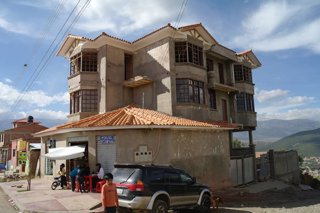
Housing in Cochabamba, Bolivia. Source: Gemma Sou
How does personal perception of risk affect how people mitigate or respond to hazards?
A lot of disaster research in the global south argues that people perceive that a disaster is the result of ‘God’s will’ and that there is very little that human beings can do to reduce this ‘inevitability’. However, my research finds that most people understand that a disaster is the result of rainfall increasing the instability of the ground, coupled with inadequate design and construction of their house. As such people perceive that they have a degree of control over the likelihood of a disaster occurring and this is why many people are very active in disaster mitigation, with particular emphasis on housing. In addition, some people’s perceptions of their risk are high, whilst others may be very low. This is because people’s perceptions are shaped by several factors, such as past experiences. Perceptions of risk are commonly high if personal injury is suffered or if the disaster was recently experienced. In contrast, no experiences with a disaster generally correlates with lower perceptions of risk. The sources and content of disaster risk information that people are exposed to is also significant. Information is principally provided through the local government, friends and family, and local construction workers. The local government states that it is not possible to mitigate a disater, which promotes inaction, whereas, information provided through informal social networks and local construction workers predominantly state that people have a degree of control over risk, which encourages human action. Another interesting finding is that women typically have higher perceptions of risk. This is principally because they spend more time at home and so are more fearful of the impacts that they may personally suffer.
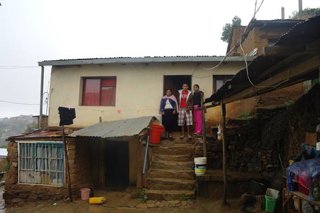
Housing in Cochabamba, Bolivia. Source: Gemma Sou
What methods did you use in your research?
I used semi-structured interviews with 70 intervewiees, which included individual household members, community presidents, local construction workers, architects and employees of city authorities. I also carried out a household survey, which entailed 400 questionnaires. Because of the scale of this I employed three research assistants who helped me to gather the questionnaires. All three were undergraduate students at the local University. I also used participatory techniques in which household interviewees were asked to draw their ‘dream house’. This helped me to identify their aspirations and motivations when constructing their houses. Ultimately this allows my research to analyse how much importance people place on disaster risk reduction when designing and constructing their house.
What are the key ideas that you have uncovered in your research?
There are two ideas I would like to point out. First, that urban dwellers living in ‘poor’ areas are not passive and helpless victims of disaster risk, which is how a lot of research and the media represents victims of disasters. I find that even people with limited resources are capable of taking responsibility and carrying out a wide variety of strategies to try and mitigate risk. Also, through focusing on housing I have found that despite living in very hazardous areas, risk reduction is just one of the motivating factors of house design and construction. When people act, they are not only motivated by risk reduction as other disaster research suggests, but by many other aspirations, wants and needs that are articulated through the design and construction of the house. As such, urban dwellers are not ‘rational environmental’ actors that respond in a mono-causal way when faced with disaster risk, but in fact negotiate many other motivations. As a consequence, formal institutions must incorporate the multiple aspirations of people into disaster risk reduction interventions if they are to be supported by urban dwellers and if they are to be sustainable.
What has been your favourite fieldwork moment?
I particularly enjoyed the interviewes. They all took place in people’s homes and so I was able to see how people articulate their lives and aspirations in their homes, which is something that I am personally very interested in and which is highly relevant to my research. In addition, people were always very welcoming and often gave me food and enthustiastically showed me around their houses, which was also very enjoyable.
Gemma was interviewed in June 2014
